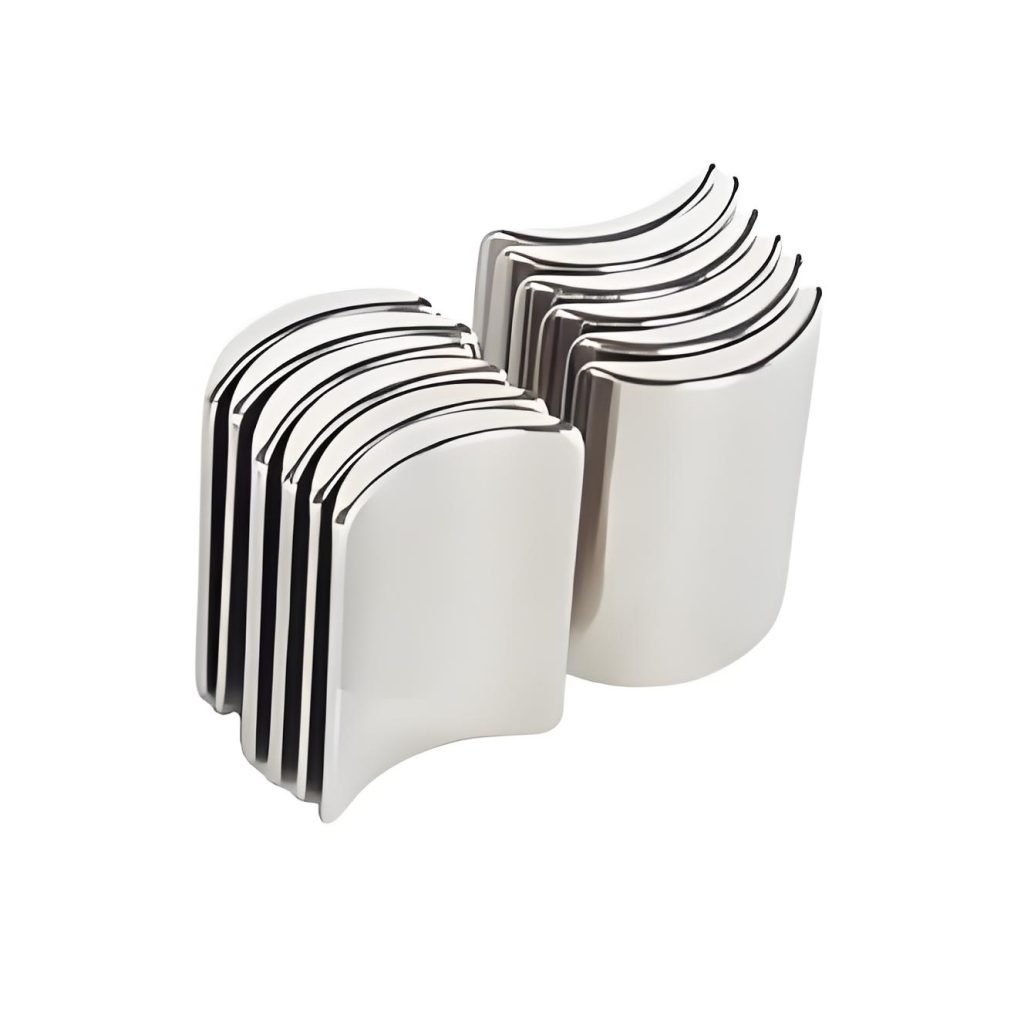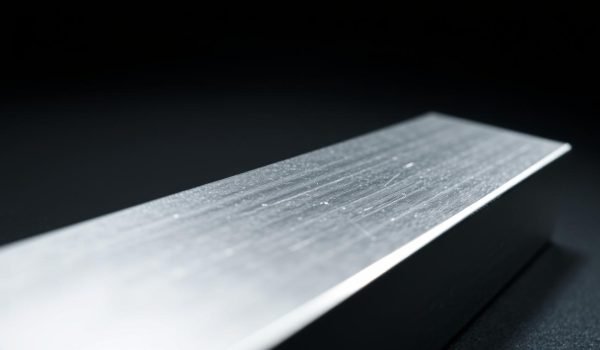Have you ever wondered whether aluminum is capable of being magnetized? This question is more relevant than you might think, given the widespread use of aluminum in various industries, from household items to complex industrial applications.

Understanding the magnetic properties of aluminum is crucial for making informed decisions in manufacturing. You might be surprised to learn that aluminum exhibits a unique behavior in magnetic fields, known as paramagnetism. This property sets it apart from commonly known magnetic metals like iron.
As you explore the world of materials and their properties, you’ll discover why understanding aluminum’s magnetic behavior is vital for various applications. Let’s dive into the fascinating world of magnetism and uncover the truth about aluminum’s magnetic properties.
Understanding Magnetism and Magnetic Materials
To grasp why certain materials are magnetic, you first need to understand the basics of magnetism. Magnetism refers to the force that can attract or repel objects due to the movement of electric charges. It’s a fundamental force that affects everything from tiny particles to massive objects.
What Is Magnetism?
Magnetism is a physical phenomenon resulting from the interaction between magnetic fields and materials. It is characterized by the presence of magnetic fields, which are created by the movement of electrons.
Types of Magnetic Behaviors
Magnetic behaviors in materials are generally categorized into three types: ferromagnetism, paramagnetism, and diamagnetism. Understanding these distinctions is crucial to explaining why some metals are magnetic while others are not.
Ferromagnetism
Ferromagnetic materials exhibit strong attraction to magnetic fields. They have domains where electron spins align, creating strong, permanent magnetic fields. Iron is a classic example of a ferromagnetic material.
Paramagnetism
Paramagnetic materials experience weak attraction to magnetic fields but do not retain magnetism once the field is removed. These materials have unpaired electrons that align with the magnetic field.
Diamagnetism
Diamagnetic materials weakly repel magnetic fields. This property is a result of the material’s electron configuration, where all electrons are paired.
The type of magnetic behavior a material exhibits is determined by its atomic structure and electron configuration. Understanding these principles helps clarify why materials like aluminum exhibit specific magnetic properties.
Is Aluminum Magnetic?

You might be surprised to learn that aluminum doesn’t behave like typical magnetic materials. The straightforward answer to whether aluminum is magnetic is that it’s not magnetic in the way most people understand magnetism.
Aluminum’s Classification in Magnetic Terms
Aluminum is classified as a paramagnetic material. This means it exhibits an extremely weak attraction to magnetic fields but doesn’t retain any magnetic properties once the field is removed. This behavior is due to its atomic structure, which lacks the necessary electron configuration to create a permanent magnetic field.
How Aluminum Responds to Magnetic Fields
When placed near a magnetic field, aluminum experiences a subtle, barely detectable attraction rather than the strong pull associated with ferromagnetic materials. This response is characteristic of paramagnetic materials, which are weakly attracted to magnets.
Comparing Aluminum to Truly Magnetic Materials
In comparison to truly magnetic materials like iron, nickel, and cobalt, aluminum’s magnetic response is significantly weaker. This highlights the differences in behavior between paramagnetic and ferromagnetic materials, showing that the common perception of “magnetic” versus “non-magnetic” is an oversimplification of a more complex spectrum of magnetic behaviors.
Understanding aluminum’s paramagnetic nature and its place within the spectrum of magnetic behaviors helps clarify its properties and how it differs from materials that are typically considered magnetic.
Aluminum’s Magnetic Properties Explained
The reason aluminum doesn’t behave like a magnet lies in its unique magnetic properties. To grasp this fully, you need to understand the underlying factors that contribute to its magnetic behavior.
Atomic Structure of Aluminum
Aluminum has an atomic number of 13, meaning it has 13 protons and electrons. Its electronic configuration is [Ne] 3s² 3p¹. This configuration influences its magnetic properties because the arrangement of electrons, particularly the presence of unpaired electrons, plays a crucial role in determining how a material responds to magnetic fields.
Electron Configuration and Magnetism
Aluminum has three unpaired electrons in its outer shell, which theoretically should contribute to magnetic behavior. However, the presence of unpaired electrons doesn’t necessarily mean a material will be strongly magnetic. In aluminum’s case, these electrons don’t maintain alignment in the absence of an external magnetic field, resulting in a lack of strong magnetism.
Magnetic Permeability of Aluminum
Magnetic permeability is a measure of a material’s ability to support the formation of a magnetic field within itself. Aluminum’s permeability is relatively low, indicating that it doesn’t readily support the formation of a magnetic field.
Magnetic Susceptibility Measurements
The magnetic susceptibility of aluminum is approximately 2.2 × 10^-5. This value indicates how much aluminum is magnetized when exposed to an external magnetic field. Compared to ferromagnetic materials, aluminum’s susceptibility is quite low, reaffirming its paramagnetic nature.
Understanding these aspects of aluminum’s magnetic properties provides a clear picture of why it behaves the way it does around magnets. You now have a deeper insight into the scientific principles governing aluminum’s non-magnetic behavior.
Why Is Aluminum Not Magnetic?
Understanding why aluminum isn’t magnetic requires a look into its paramagnetic nature and atomic configuration. You might be wondering why aluminum doesn’t stick to magnets like iron does. The answer lies in its atomic structure and how it responds to magnetic fields.
The Science Behind Aluminum’s Paramagnetic Nature
Aluminum is classified as a paramagnetic material, meaning it’s weakly attracted to strong magnetic fields. This is due to the presence of unpaired electrons in its atoms. These unpaired electrons produce a weaker magnetic attraction compared to ferromagnetic materials.
Unpaired Electrons in Aluminum
The electrons in aluminum don’t cancel out their spinning, resulting in a net magnetic moment. However, the alignment of these moments is not strong enough to create a significant magnetic field. This is in contrast to ferromagnetic materials like iron, where the alignment of magnetic moments is much stronger.
Crystal Structure’s Role in Magnetism
Aluminum has a face-centered cubic (FCC) crystal structure, which affects the interaction between neighboring atoms and their magnetic moments. The conduction electrons in aluminum are delocalized, preventing them from contributing significantly to magnetic behavior. This crystal structure plays a crucial role in preventing the alignment of magnetic moments necessary for strong magnetic properties.
In summary, aluminum’s lack of strong magnetic properties is due to its paramagnetic nature, the presence of unpaired electrons, and its crystal structure. While it may not be magnetic in the same way as iron, understanding its properties is essential for various industrial applications.
Can Aluminum Become Magnetic?

You might be surprised to learn that aluminum, though not inherently magnetic, can display temporary magnetic behavior under specific conditions. This phenomenon is not the same as the permanent magnetism seen in ferromagnetic materials, but rather a response to external magnetic fields.
Temporary Magnetization in Strong Fields
When aluminum is placed in an extremely strong magnetic field, it can experience temporary magnetization. This occurs because the external field causes a slight alignment of aluminum’s magnetic moments, inducing weak magnetic properties.
Eddy Currents and Magnetic Interactions
Another fascinating phenomenon is the generation of eddy currents when a magnet is moved near aluminum. These electrical currents create their own magnetic fields, interacting with the original magnet and demonstrating a complex relationship between aluminum and magnetic forces.
The Falling Magnet Experiment
A classic demonstration of this interaction is the “falling magnet experiment,” where a magnet dropped through an aluminum tube falls slower than expected due to the electromagnetic interactions between the magnet and the tube.
It’s crucial to understand that any magnetic properties induced in aluminum are temporary and disappear once the external magnetic field is removed. This temporary behavior differs fundamentally from true ferromagnetic behavior, highlighting the complex and nuanced relationship between aluminum and magnetic fields.
Factors Affecting Aluminum’s Magnetic Properties
You might be surprised to learn that several factors can alter aluminum’s weak paramagnetic response to magnetic fields. While aluminum is generally considered paramagnetic, various conditions can influence its magnetic behavior.
Temperature Effects
Temperature plays a significant role in aluminum’s magnetic properties. At higher temperatures, increased atomic motion reduces the alignment of unpaired electrons, potentially decreasing its already weak magnetic susceptibility.
External Magnetic Field Strength
The strength of an external magnetic field directly correlates with the degree of temporary magnetization aluminum might exhibit. As the external magnetic field strengthens, aluminum’s response becomes more pronounced.
Purity and Impurities
Impurities in aluminum, especially ferromagnetic elements like iron, can significantly alter its magnetic behavior. Even small amounts of iron can make aluminum appear more magnetic than it naturally is.
Processing Methods and Crystal Structure
Different processing methods, such as casting, extrusion, and rolling, affect aluminum’s crystal structure and grain boundaries, which in turn can influence its magnetic properties.
Magnetic Properties of Aluminum Alloys
The addition of other elements to aluminum can dramatically change its magnetic characteristics. When aluminum is alloyed with certain metals, its magnetic properties can be significantly enhanced or altered.
Aluminum-Iron Alloys
Aluminum-iron alloys can exhibit impressive magnetic abilities due to the presence of highly magnetic iron. The composition of these alloys determines their magnetic properties.
Aluminum-Manganese Alloys
Aluminum-manganese alloys show unique magnetic behavior, with manganese contributing to increased magnetic susceptibility. These alloys also maintain good corrosion resistance.
Other Common Aluminum Alloys and Their Magnetic Behavior
Other aluminum alloys, such as those with copper, magnesium, or zinc, display varying magnetic behaviors. The percentage of alloying elements directly impacts the resulting magnetic properties.
Some specialized aluminum alloys are designed to either enhance or minimize magnetic responses for specific applications, showcasing the versatility of aluminum’s magnetic properties through alloying.
Industrial Relevance of Non-magnetic Aluminum
Aluminum’s unique properties, including its non-magnetic behavior, have made it indispensable in several key industries. You benefit from aluminum’s versatility in various applications where magnetic interference could be a problem.
Electronics and Telecommunications
In the electronics and telecommunications sectors, aluminum is used for components that must function near magnetic fields without disruption. Its non-magnetic properties ensure that these components operate effectively.
Medical Equipment and MRI Compatibility
Medical equipment, especially MRI machines, rely on non-magnetic materials like aluminum. Magnetic canisters or tools must not be magnetically reactive, making aluminum the ideal choice.
Aerospace and Transportation Uses
The aerospace industry benefits from aluminum’s lightweight and non-magnetic properties. Aircraft components and satellites use aluminum to avoid interference from magnetic fields.
Construction and Infrastructure Benefits
In construction, aluminum’s non-magnetic properties are beneficial for buildings with sensitive electronic equipment or those near power transmission lines.
By understanding aluminum’s industrial relevance, you can appreciate its value across various sectors, from electronics to aerospace, where its non-magnetic properties provide significant advantages.
Conclusion
To sum it up, aluminum’s non-magnetic nature makes it a valuable material in various industries. You’ve learned that aluminum is paramagnetic, with a weak attraction to magnetic fields. Its lightweight, corrosion resistance, and non-magnetic properties make it versatile. Industries like electronics and aerospace benefit from these properties. Understanding aluminum’s magnetic properties helps you make informed decisions about its use where magnetic interference is a concern.




